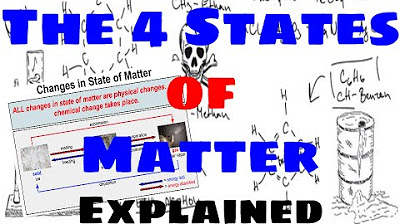AP Environmental Science 4.5 - Global Wind Patterns
Summary
TLDRIn this educational video, Mr. Smith explores Global Wind Patterns, explaining how the Earth's rotation, the Sun's energy, and air properties like density and moisture content influence atmospheric circulation. He delves into the Hadley cell, illustrating how warm air rises at the equator, cools, and precipitates, while also discussing the Coriolis effect's impact on wind direction. The video aims to help viewers understand the environmental factors behind these global weather patterns, using visual models to clarify complex concepts.
Takeaways
- 🌍 The Earth's rotation and the basic properties of air, such as density, are fundamental to understanding global wind patterns.
- 🌞 The intensity of the Sun's energy at the equator causes warm air to rise, leading to the formation of the Hadley cell, which is a key component of global wind patterns.
- 🔥 Warm air is less dense than cold air and holds less moisture, which is why it rises and leads to precipitation as it cools and expands.
- 🌧️ Precipitation forms when the water vapor in rising warm air condenses due to cooling, which is a significant part of the atmospheric circulation process.
- 🔄 The Hadley cell is a circulation pattern between 0 and 30 degrees latitude, responsible for global wind patterns and the distribution of deserts and rainforests.
- 🏜️ Deserts typically form around 30 degrees north and south latitude due to the sinking of dry air, creating high-pressure systems.
- 📉 Air pressure differences cause air to move from high-pressure areas near 30 degrees towards low-pressure areas at the equator and 60 degrees.
- 🌀 The Coriolis effect, caused by Earth's rotation, deflects the path of winds and other moving objects, influencing wind direction and ocean currents.
- 🌬️ The trade winds between 0 and 30 degrees blow from east to west due to the Coriolis effect, impacting weather patterns and ocean circulation.
- 🌪️ Between 30 and 60 degrees, the westerlies blow from west to east, influenced by the Earth's faster rotation at lower latitudes.
- 📚 Understanding the relationships between the Sun's energy, air properties, and the Coriolis effect is essential for explaining global atmospheric circulation and weather patterns.
Q & A
What are the three basic factors that influence atmospheric circulation?
-The three basic factors that influence atmospheric circulation are the intensity of energy from the Sun, properties of air such as density, and the spinning of the Earth on its axis, which produces the Coriolis effect.
Why does warm air rise and how does it affect weather patterns?
-Warm air rises because it is less dense than cold air. As warm air rises, it cools and expands, leading to the condensation of water vapor into liquid, which forms precipitation such as rain or snow. This process affects weather patterns by causing precipitation in certain areas.
What is the Hadley cell and how does it influence global wind patterns?
-The Hadley cell is a cycle of air circulation between 0 and 30 degrees latitude. Warm air rises at the equator, cools and spreads out, then sinks back down at 30 degrees north and south. This cycle influences global wind patterns by creating predictable wind and weather patterns, such as trade winds and desert formations at 30 degrees.
How does the Sun's energy impact air circulation at the equator?
-Sunlight is most direct at the equator, causing air to warm and rise. As the warm air rises, it cools and expands, leading to condensation of water vapor into rain. This results in intense rainfall at the equator.
Why do deserts typically form around 30 degrees north and south latitude?
-Deserts form around 30 degrees north and south latitude because the air that descends back to Earth at these latitudes is very dry. The cool, dry air creates high-pressure areas, leading to arid conditions and desert formation.
What causes air to move from high-pressure to low-pressure areas on Earth’s surface?
-Air moves from high-pressure to low-pressure areas due to the pressure gradient force. At 30 degrees, the high-pressure system causes air to flow towards the low-pressure system at the equator and towards 60 degrees latitude, creating wind patterns.
How does the Earth's rotation affect wind patterns?
-The Earth's rotation causes the Coriolis effect, which deflects the path of moving air to the right in the Northern Hemisphere and to the left in the Southern Hemisphere. This deflection results in curved wind patterns instead of straight north-south movement.
What is the Coriolis effect and how can it be understood using a baseball example?
-The Coriolis effect is the deflection of moving objects, like wind, due to Earth's rotation. If you throw a baseball straight south from the North Pole, it will be deflected to the right because the ground beneath it is rotating. Similarly, wind is deflected as it moves across Earth's surface.
Why does wind between 30 and 60 degrees latitude move from west to east?
-Wind between 30 and 60 degrees latitude moves from west to east because the Earth at 30 degrees is spinning faster than at 60 degrees. This difference in rotational speed causes the wind to be deflected in the same direction as Earth's spin, resulting in westerlies.
How do global wind patterns influence ocean currents?
-Global wind patterns drive the circulation of ocean currents. In the Northern Hemisphere, winds create clockwise ocean currents, while in the Southern Hemisphere, they create counterclockwise currents. This movement of water affects climate and weather patterns globally.
Outlines

Esta sección está disponible solo para usuarios con suscripción. Por favor, mejora tu plan para acceder a esta parte.
Mejorar ahoraMindmap

Esta sección está disponible solo para usuarios con suscripción. Por favor, mejora tu plan para acceder a esta parte.
Mejorar ahoraKeywords

Esta sección está disponible solo para usuarios con suscripción. Por favor, mejora tu plan para acceder a esta parte.
Mejorar ahoraHighlights

Esta sección está disponible solo para usuarios con suscripción. Por favor, mejora tu plan para acceder a esta parte.
Mejorar ahoraTranscripts

Esta sección está disponible solo para usuarios con suscripción. Por favor, mejora tu plan para acceder a esta parte.
Mejorar ahoraVer Más Videos Relacionados

The Four States of Matter - Explained

Lab Equipment - Explained

3. Gr 11 Life Sciences - Population Ecology - Theory 3 Mark Recapture Method

4. Gr 11 Life Sciences - Population Ecology - Worksheet 1

PENJASKES KELAS X - SOFTBALL

Introduction to Culture [AP Human Geography Review Unit 3 Topic 1]

Menentukan Mr ( massa molekul relatif )
5.0 / 5 (0 votes)
